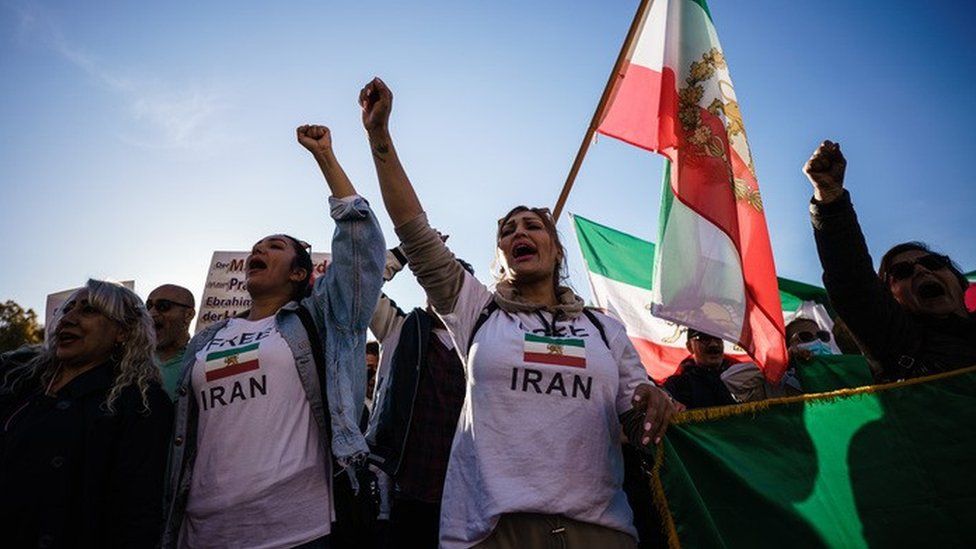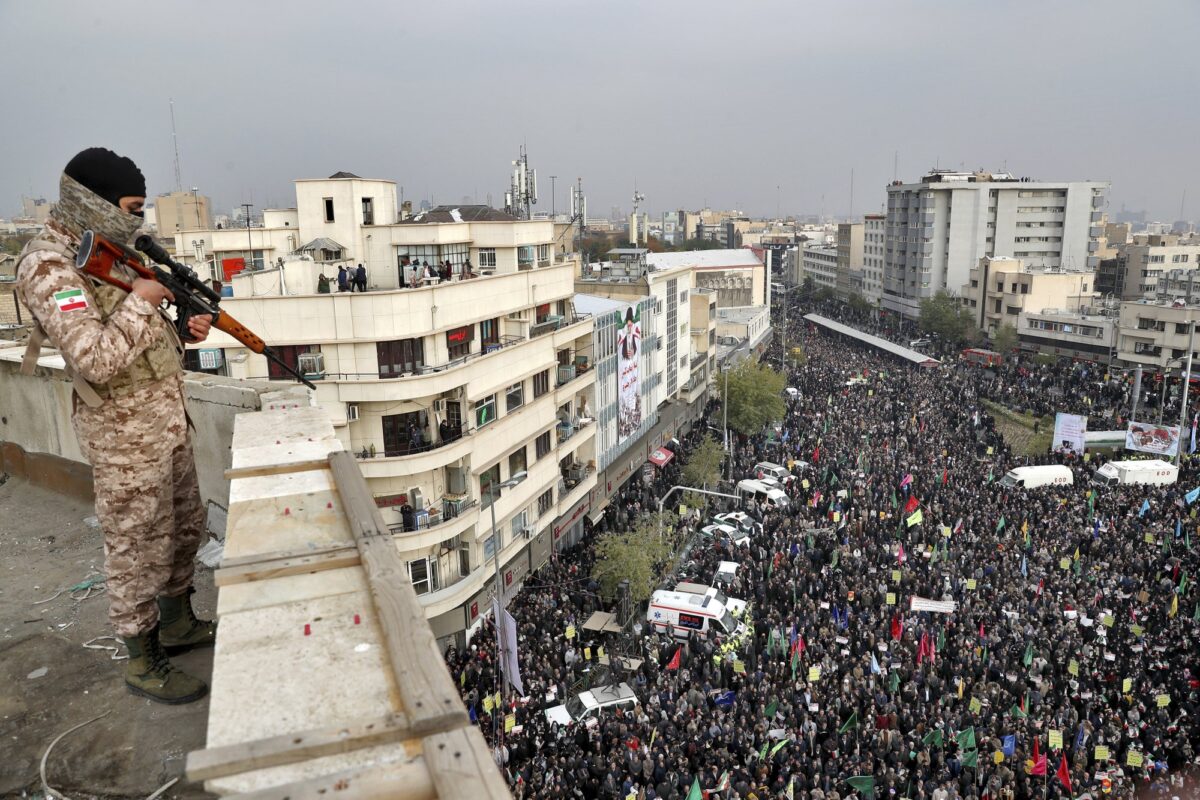Political Landscape and Governance

Iran’s political system is a complex and unique blend of religious and secular elements, characterized by a strong emphasis on Islamic principles and a hierarchical structure of governance. The Islamic Republic of Iran, established in 1979 following the Iranian Revolution, operates under a constitution that defines the country’s political framework and institutions.
The Role of the Supreme Leader and the President
The Supreme Leader, the highest authority in the country, holds significant power and influence over all branches of government. He is responsible for appointing key officials, including the President, the judiciary heads, and the commanders of the armed forces. The Supreme Leader also has the authority to interpret the constitution and issue decrees that have the force of law. The President, on the other hand, is elected by the people and serves as the head of the executive branch. The President is responsible for overseeing the government’s day-to-day operations, implementing policies, and appointing ministers. While the President has some executive power, the Supreme Leader ultimately has the final say in matters of state.
The Impact of International Sanctions, News iran
International sanctions imposed on Iran over its nuclear program and human rights concerns have had a significant impact on the country’s economy and governance. These sanctions have restricted Iran’s access to global financial markets, technology, and trade, leading to economic hardship and limited development. The sanctions have also impacted the government’s ability to provide essential services to its citizens and have contributed to social unrest.
Human Rights and Civil Liberties
Iran’s human rights record has been subject to international scrutiny and criticism. The country has faced accusations of human rights violations, including restrictions on freedom of speech, assembly, and religion. The government has also been criticized for its treatment of political dissidents, minorities, and women. The Iranian government has defended its policies, arguing that they are necessary to protect national security and maintain social order. However, international organizations and human rights groups continue to call for improvements in Iran’s human rights record.
Economic Situation and Challenges

Iran’s economy is a complex and multifaceted system, characterized by both strengths and weaknesses. It is a major oil producer and exporter, with a large and diverse industrial sector. However, the country faces significant challenges, including sanctions, economic mismanagement, and a dependence on oil revenues.
Key Industries and Sectors
Iran’s economy is dominated by the oil and gas sector, which accounts for a significant portion of its GDP and exports. Other key industries include:
- Manufacturing: Iran has a robust manufacturing sector, producing a wide range of goods, including automobiles, textiles, and petrochemicals.
- Agriculture: Agriculture is a significant sector, employing a large portion of the workforce and producing a variety of crops, including wheat, rice, and fruits.
- Services: The services sector is growing rapidly, driven by increasing urbanization and consumer demand.
Impact of Oil Prices and Global Economic Trends
Iran’s economy is highly sensitive to fluctuations in global oil prices. When oil prices are high, Iran’s economy benefits from increased export revenues. However, when oil prices decline, the country faces economic difficulties, as its export earnings fall and its budget deficit widens. Additionally, global economic trends, such as recessions or trade wars, can also impact Iran’s economy. For instance, the global financial crisis of 2008-2009 had a significant impact on Iran’s economy, leading to a sharp decline in GDP growth.
Challenges in Diversifying the Economy and Attracting Foreign Investment
Iran faces significant challenges in diversifying its economy and attracting foreign investment. These challenges include:
- Sanctions: International sanctions have severely restricted Iran’s access to global markets and financial institutions, making it difficult for the country to attract foreign investment and diversify its economy.
- Economic Mismanagement: Past economic policies have contributed to inflation, unemployment, and a decline in living standards. These factors have made Iran less attractive to foreign investors.
- Bureaucracy: Iran’s bureaucratic system can be complex and time-consuming, discouraging foreign investors.
- Lack of Transparency: A lack of transparency in Iran’s economic policies and regulations can also deter foreign investors.
Government Economic Policies and Their Effectiveness
The Iranian government has implemented a range of economic policies in recent years, aimed at diversifying the economy, attracting foreign investment, and improving living standards. These policies include:
- Privatization: The government has been promoting privatization, seeking to transfer state-owned enterprises to the private sector.
- Tax Reform: The government has implemented tax reforms to improve revenue collection and reduce tax evasion.
- Investment Incentives: The government has introduced investment incentives to attract foreign investors, such as tax breaks and simplified regulations.
The effectiveness of these policies has been mixed. While some progress has been made in diversifying the economy and attracting foreign investment, the impact of sanctions has limited the government’s ability to achieve its economic goals.
Social and Cultural Developments: News Iran

Iran boasts a rich tapestry of social and cultural traditions, shaped by its historical and geographical context. The country’s diverse population, influenced by various ethnicities, religions, and languages, contributes to a vibrant and complex cultural landscape.
The Role of Religion and Religious Institutions
Religion plays a central role in Iranian society, with Islam serving as the official state religion. The majority of Iranians are Shia Muslims, with a significant minority of Sunni Muslims. Religious institutions, including mosques, seminaries, and religious leaders, exert a considerable influence on various aspects of life, including education, law, and social customs. The clergy holds a prominent position in the political sphere, with the Supreme Leader, a Shi’a cleric, serving as the highest authority in the country.
Social Media and Technology’s Impact on Iranian Youth and Culture
The advent of social media and technology has had a profound impact on Iranian youth and culture. Despite government efforts to control internet access and content, social media platforms have become a powerful tool for communication, information sharing, and cultural expression. Young Iranians are increasingly using these platforms to engage in discussions on social and political issues, share their creative work, and connect with individuals from diverse backgrounds. However, the government’s surveillance and censorship measures have created a complex landscape for online expression, with users navigating a delicate balance between freedom and potential repercussions.
The Changing Role of Women in Iranian Society
The role of women in Iranian society has been subject to significant change and debate. While the Islamic Republic emphasizes traditional gender roles, there has been a growing movement advocating for women’s rights and empowerment. Women have made significant strides in education and professional fields, with many holding prominent positions in academia, medicine, and other sectors. However, women continue to face challenges related to social and legal restrictions, including limitations on their dress code, travel, and employment opportunities. The ongoing debate over women’s rights reflects the complexities of navigating tradition and modernity in Iranian society.
News iran – News from Iran often focuses on the country’s political and economic struggles, but beneath the surface lies a long-standing tension with Israel, a conflict deeply rooted in history and fueled by competing ideologies. To truly understand the complexities of Iran’s current news, one must delve into the intricate relationship between these two nations, a relationship marked by mistrust and suspicion.
Israel and Iran have a history of conflict and tensions, which continues to shape the region’s dynamics and influence news coming out of Iran.
The news from Iran continues to be a source of tension and uncertainty, with international observers closely watching the unfolding events. While the world grapples with the implications of these developments, it’s important to remember that time marches on, even in the midst of global crises.
For those looking to understand the current time in Israel, a quick glance at israel time right now can provide a helpful point of reference. Ultimately, understanding the complexities of the Iranian situation requires a multifaceted approach, encompassing both global events and local time perspectives.
